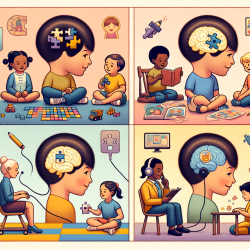Unlocking the Secrets of Emotion Perception in Autism
In the realm of special education, understanding the unique ways in which students with autism perceive and process emotions is crucial. Recent research titled "Autistic traits shape neuronal oscillations during emotion perception under attentional load modulation" offers groundbreaking insights into this area. This study, conducted by Mathilde Marie Duville and colleagues, sheds light on how autistic traits influence the brain's response to emotional stimuli, particularly under varying cognitive loads.
The Study: A Closer Look
The study involved 62 children, half of whom were typically developed and the other half diagnosed with autism spectrum disorders (ASD). Using electroencephalography (EEG), researchers recorded neuronal oscillations as the children processed emotional prosodies—vocal expressions of emotions—while engaged in tasks with different levels of attentional load.
One key finding was that typically developed children showed optimized emotion processing under intermediate cognitive loads. However, for children with autism, emotional processing and selective attention were less influenced by cognitive load variations, indicating a distinct processing mechanism.
Implications for Practitioners
For practitioners working with children with autism, these findings underscore the importance of tailoring educational and therapeutic approaches to accommodate the unique ways these children process emotions. Here are some practical takeaways:
- Customized Learning Environments: Create learning environments that balance cognitive demands, as intermediate loads may enhance emotional processing in typically developed children.
- Focus on Emotional Integration: Develop strategies that specifically target emotional integration, recognizing that children with autism may require different approaches than their typically developing peers.
- Use of Technology: Consider incorporating EEG and other neurofeedback tools to better understand and support the emotional and cognitive processing of students with autism.
Encouraging Further Research
While this study provides valuable insights, it also opens the door for further research. Practitioners are encouraged to explore how different types of cognitive loads affect emotional processing in diverse educational settings. Additionally, investigating how these findings can be applied to improve therapeutic interventions for children with autism could lead to more effective support strategies.
Conclusion
The study by Duville et al. highlights the complex interplay between cognitive load, emotion perception, and autistic traits. By understanding these dynamics, educators and therapists can better support the emotional and cognitive development of children with autism. For those interested in delving deeper into this research, the full paper is available here.










